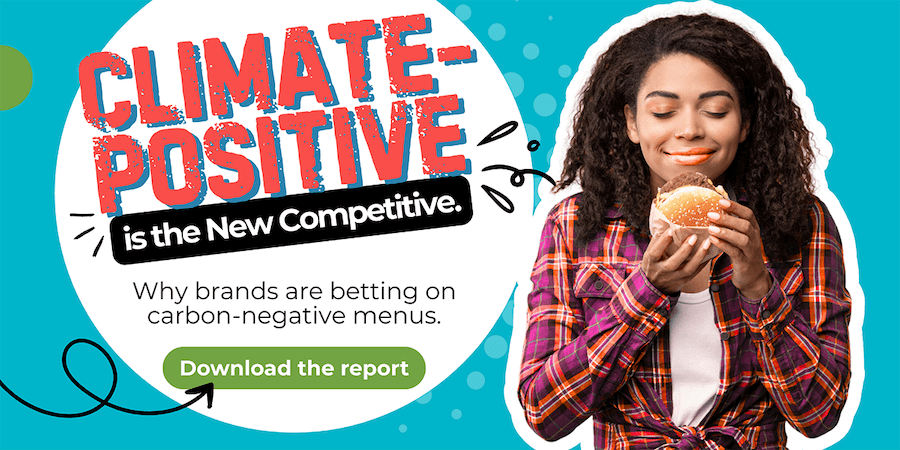Food packaging is a vital and growing industry. The global food packaging market size was $304.98 billion in 2019 and is projected to reach $463.65 billion by 2027 — this is an area that no Consumer Packaged Goods business can afford to overlook.
This article will look at why it’s so important to get food packaging right, explore some of the challenges facing companies, and show you how to package your food as effectively as possible.
Why it’s so important to get food packaging right
The growing consumption of packaged food
People are eating more packaged food — the U.S. packaged food market is predicted to grow at a CAGR of 4.1% from 2021 to 2028. There are many reasons for this continued growth — e-commerce, the rise of packaged vegan alternatives, and increasingly hectic lifestyles that keep millions of consumers on the go and forced to rely on store-bought, convenient food.
All this means that packaging is increasingly important. Packaging manufacturers need to keep abreast with trends and ensure their packaging does enough to stand out.
Increasing environmental concerns and pressures
Consumers are more concerned about the environment, and their impact on it, than ever before. This has led people to be more mindful about their packaged food and to gravitate towards packaging that is more eco-friendly, recyclable, and which can prove this to them.
Companies that fail to take this into account, and persist with packaging which is obviously bad for the environment, will struggle to hold onto their more eco-aware customers as their competitors embrace greener packaging.
New technologies like Augmented Reality
Emerging technologies like augmented reality bring a whole host of compelling use cases for food packaging. Companies who can weave this technology into their packaging stand to get a major head start over their competition, wowing their customers with never-before-seen tricks and features and standing out in an entirely new way.
Protection
Today, people are more concerned than ever about hygiene and food safety. The right packaging is necessary to guarantee fresh, high-quality food for customers. Companies that fail to do this stand to face big reputational hits and high-profile incidents. In addition, the right packaging also helps to extend the shelf life of products, widening the window of time in which they can be bought.
Marketing challenges and things to keep in mind
Meeting these challenges around food packaging can be tough. Companies today are faced with a wide range of challenges and things to consider when packaging their food. Here are some examples.
Standing out
As the food packaging market continues to grow, you’ll need to focus harder on grabbing your customers’ attention and competing with other brands and their packaging on the supermarket shelves. It’s no longer enough to go with basic, unimaginative packaging — even recognised and established brands now have to work hard to seize and maintain the spotlight.
Including all relevant information
Today’s consumers want to be informed. They are more environmentally conscious, health-conscious, and demanding than ever before. This means they are hungry for detailed information about where your product comes from, how it was made, exactly what it contains, and more.
Costs
As packaging becomes more advanced, sustainable, and detailed, it also often becomes more expensive. As you evolve your food packaging, you also need to consider the impact on your bottom line. Figuring out how to create the best packaging possible without taking an unacceptable financial hit can be a major challenge.
Preserving food
Ensuring your packaging keeps food as fresh as possible to prolong its shelf life has always been a big challenge for manufacturers. Developments in packaging technology have made this easier and more effective than ever before, but you have to balance this with using sustainable materials, saving costs, and promoting your brand.
How to conduct market research for food packaging effectively
The only way to ensure you succeed with food packaging is to conduct extensive market research in all the right areas. This helps you establish what your customers want, how feasible it would be to deliver, what your competitors are doing, and much more. Here are some guidelines for conducting effective market research for food packaging.
Get familiar with emerging technology
New technologies can provide impressive benefits for packaging. For example, Kadence partnered with Asahi to test augmented technology in packaging market research. We showed a group of customers an augmented reality model of Asahi’s packaging design, allowing them to get a real, lifelike feel for the beer from their own homes. As a result, they were able to provide more detailed and useful feedback compared to customers who only saw a 2D image.
Be rigorous with costs
Packaging costs can quickly mount up and seriously eat into your budget. It’s essential to be clear on how much your packaging will cost and ensure this is affordable. Advanced packaging can be expensive, and sometimes the extra cost isn’t worth the additional benefits.
Get to know your customers and what they want
As with all market research, the most critical step is understanding your customers and getting familiar with their pain points and what they want. Talk to them extensively through surveys, focus groups, online interactions, and use secondary research on existing market trends.
For example, if you find that your customers are particularly concerned about the environment, it’s a sign to focus more on eco-friendly packaging and to promote this in your marketing. If your customers are concerned with nutrition, be sure to highlight the health benefits of your product in your packaging.
Identify opportunities for upselling
Market research can be an excellent way to discover opportunities for upselling existing products and even find ideas for entirely new products. Your packaging, if done right, can be used to promote other products in your range and be a marketing channel in its own right.
However, the only way to achieve this is to conduct proper research, ensuring you understand all possible opportunities and identify demand in the right areas.
Discover and follow trends
Today’s customers have high demands for brands. People want eco-friendly packaging, detailed information about nutrition and health, and the latest in smart packaging.
Some of your market research should focus on identifying these trends and learning more about what your specific customer base is passionate about and considers essential. This way, you’ll be able to create packaging that satisfies their demands and signals that you’re the kind of company they want to support.
Develop a strong brand voice and brand personality
Your packaging is the first thing your customers see about your brand. It should boldly state who you are and what sets you apart from everyone else, and clearly embody your brand’s personality.
Developing a voice for your brand takes time, but market research is a central component of that process. Your research will shed light on who your customers are, what niche you occupy, and what makes your brand and products unique. This way, you’ll be able to establish a strong and distinctive brand voice and let it shine through in your packaging.
Market research is a long and incredibly important process for all kinds of reasons, and food packaging is just one area of this.
At Kadence, we help consumer goods companies with market research and packaging solutions, enabling them to succeed and use their resources as effectively as possible. Contact us to find out more about how we can help you do the same.




